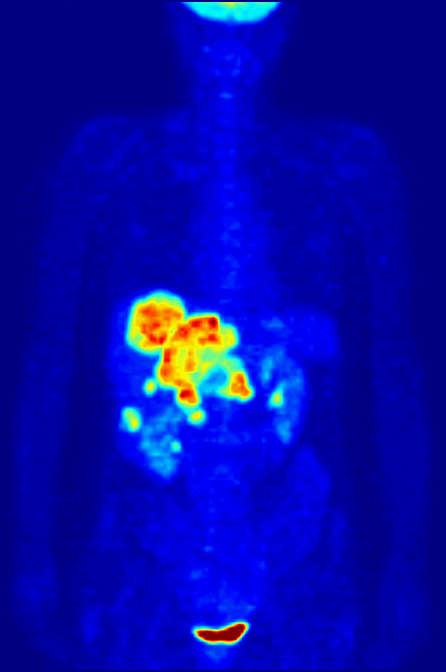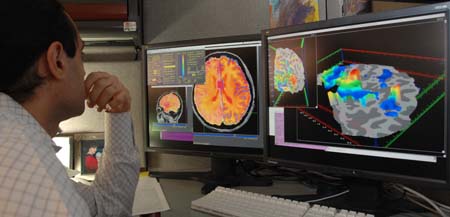Brain Computer Interface
for mobile devices
Piotr Wittchen, 2013
Brain Computer Interface
Overview
A brain–computer interface (BCI) is a direct communication pathway between the brain and an external device. BCIs are often directed at assisting, augmenting, or repairing human cognitive or sensory-motor functions.
BCI history
in a few words
The history of brain-computer interfaces starts with Hans Berger's discovery of the electrical activity of the human brain. In 1924 Berger was the first to record human brain activity. He was able to identify oscillatory activity in the brain, such as the alpha wave (8–12 Hz).

BCI versus
neuroprosthetics
Neuroprosthetics is an area of neuroscience concerned with neural prostheses. The difference between BCIs and neuroprosthetics is mostly in how the terms are used: neuroprosthetics connect the nervous system to a device, whereas BCIs connect the brain (or nervous system) with a computer system.

Electromyography (EMG)
Technique for evaluating and recording the electrical activity produced by skeletal muscles. EMG can support BCI.
Brain Imaging Techniques
-
Magnetoencephalography (MEG)
-
Positron emission tomography (PET)
-
Single-photon emission computed tomography (SPECT)
-
Functional magnetic resonance imaging (fMRI)
-
Functional Near Infrared (fNIR)
- Electroencephalography (EEG)
Magnetoencephalography (MEG)
Technique for mapping brain activity by recording magnetic fields produced by electrical currents occurring naturally in the brain, using very sensitive magnetometers.
Positron emission tomography (PET)
Nuclear medical imaging technique that produces a three-dimensional image or picture of functional processes in the body.

Single-photon emission computed tomography (SPECT)
Nuclear medicine tomographic imaging technique using gamma rays.
Functional magnetic resonance imaging (fMRI)
Magnetic Resonance Imaging procedure that measures brain activity by detecting associated changes in blood flow.
Functional Near Infrared (fNIR)
Using fNIR, brain activity is measured through hemodynamic responses (blood movement) associated with neuron behavior. Mentioned responses can be detected with Infrared (IR) radiation.
Electroencephalography (EEG)

Recording of electrical activity of the brain along the scalp.
How does EEG work?
After placing electrodes on the skull, we can register changes of electric potential on the surface of the skin. These changes are caused by activity of neurons of the cortex.
EEG rhythmic activity frequency bands
-
Delta (up to 4 Hz) - in babies or slow-wave sleep by adults
-
Theta (4-8 Hz) - young children or drowsiness by older childern and adults, idling
-
Alpha (8-13 Hz) - relaxed/reflecting, closing eyes, pathologically: coma
-
Beta (>13-30 Hz) - active, busy, concentration or anxious thinking, pathologically:
Benzodiazepines
-
Gamma (30-100+ Hz) - perception that combines different senses (e.g. sound and sight), short-term memory matching of recognized objects
-
Mu (8-13 Hz) - shows rest-state motor neurons
Example - One Second of EEG signal
One second of thinking...
...is one second of electrical activity of the brain.

Preparing a Project
The goal of the project is to create simple application for mobile devices, which will allow user to access basic functions of the smartphone like calling, sending SMS-es and e-mails, browsing websites, etc. with using brain waves and Electromyography (EMG).
Hardware used for the project
Neurosky MindWave Mobile - diagram
Neurosky Mindwave mobile - features
-
Bluetooth v. 3.0 class 2 (10 meters range)
-
Wireless pariring
-
Static headset ID for pairing purposes
-
8-hours battery runtime (uses one AAA battery - 1.5 V)
-
iOS and Android support
-
Measures raw brainwaves
-
Processing and output of EEG power spectrum (Alpha, Beta, etc.)
-
Processing and output propertiary eSense meter for mediation, attention and other future meters
- Blink detection
- Signal quality analysis
Simple Communication Scheme
Wireless bluetooth connection
between mobile device and NeuroSky Mindwave mobile



Software part of the project
The following tools are going to be used in the project:
Creating BCI for mobile devices
-
Preparing different case studies and approaches of UI
-
Switching screens or options automatically with a given interval (e.g. 5 seconds)
- Classifying different states of brain
- Assigning different brain states to appropriate tasks
-
Switching screens or options by "double-blink"
-
Choosing single option by obtaining attention state over given value for several seconds
-
Optionally, going back to previous screen by obtaining meditation state over given value for several seconds
- Voice feedback (useful for people with eyes problems)
- Predefinig and limitating list of given options
-
Other approaches and ideas
-
Testing created solutions by different people
Thank you for attention!
Do you have any questions?
Silesian University of Technology,
Macrofaculty of Automatic Control, Electronics and Computer Science
Gliwice, Poland, 2013
The best way to predict the future is to create it yourself. - Peter Diamandis









